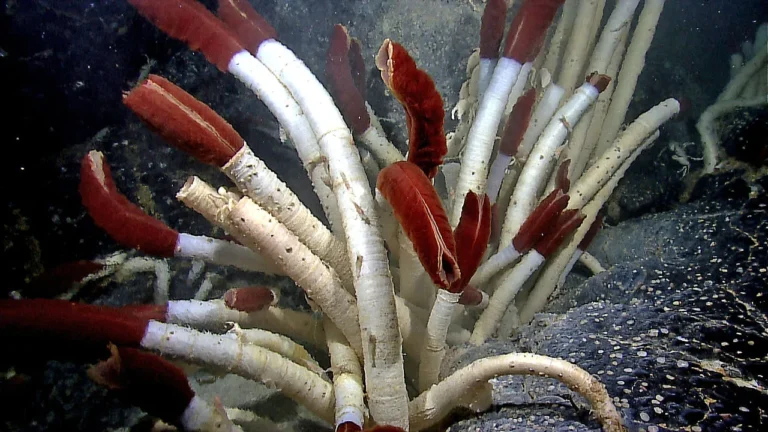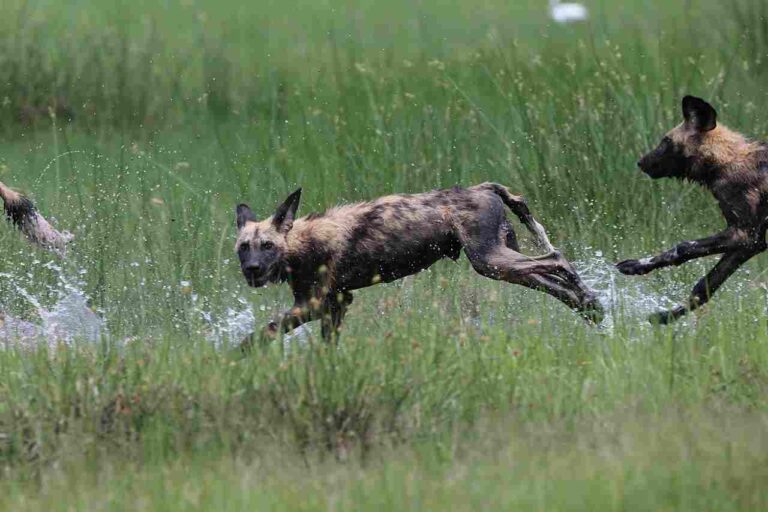22 Advantages and Disadvantages of Hydroponics
Hydroponics is an agricultural practice whereby plants are cultivated without soil, by providing them with a nutrient solution. Advantages and disadvantages of hydroponics are; high yield, soil conservation, water conservation, pest and disease control, pH optimization, versatility, sustainable production, energy efficiency (advantages); cost, low ROI, technical demands, maintenance, monitoring, (disadvantages).
This article discusses the advantages and disadvantages of hydroponics, as outlined below;
Advantages of Hydroponics
1). No Need for Soil in Hydroponics
In hydroponics farming, soil is not required [2].
This is an advantage for some reasons.
One of such reasons is the fact that agricultural land is becoming a scarce resource [10], especially as a result of the growth of the global population, which is associated with rising demand for food and residential land.
Another reason is that with hydroponics, land (which is an important natural resource) can be conserved. At the same time, problems of food insecurity due to land shortage can be addressed. These are good steps toward achieving sustainable development.
Hydroponics also creates prospects for sustainable agriculture in the future. An example of this can be seen in the consideration of hydroponics as a method for agricultural cultivation in Space and on Mars [9].
Some problems associated with conventional, soil-based agriculture can be addressed using hydroponics. Such problems include soil testing and suitability requirements, and natural hazards like landslides and erosion.

2). High Agricultural Yield
Studies have shown that hydroponics generally leads to higher plant yield than conventional farming methods [7].
This is due to various reasons.
The rate of growth of plants in a hydroponics setup is usually faster than the growth rate in soil-based cultivation, because hydroponic farming supplies the required nutrients directly to the roots of the plant.
Also, in hydroponics, the process can be controlled such that the nutrients are supplied in sufficient quantity. In hydroponics, other important materials and conditions needed by the plant, such as oxygen, moisture and temperature, can be supplied sufficiently.
The regulated conditions of hydroponics farming, eliminates some factors that can affect plant growth, like predatory organisms, inhibited root development, and insufficient light supply. Easier access to nutrients also potentially enhances growth.
3). Water Conservation
Hydroponics farming consumes less water than conventional farming, because the water is supplied directly without any absorption by soil.
While hydroponics systems depend on water (that is; nutrient solution) for plant growth, they are estimated to consume about 80-90% less water than conventional agricultural methods [14].
The main reason for this is the fact that in conventional farming, relatively-large amounts of water must be provided, in order for the plant to survive.

In the absence of large amounts of water, there will be little or nothing left for the plant after a significant portion of the water has been completely absorbed by the soil.
On the other hand, hydroponics method provides the nutrients in their dissolved state, in water, directly to the plant. This eliminates the loss of water due to absorption by soil.
Also, in most hydroponics systems, the nutrient solution is continuously re-circulated and recycled [3]. This mechanism ensures that water (and its dissolved nutrients) is not wasted.
An obvious benefit of minimal water consumption in hydroponics is the fact that natural resources (water and nutrients) are conserved. This is beneficial to the ecosystem, and is a step in the direction of sustainable development.
In hydroponics, the mechanisms by which water loss may occur are leakage and evaporation. The potential of water loss by either of these two mechanisms, is minimal for most hydroponic setups.
4). Pest and Disease Control
Hydroponics reduces the prospect of plants being affected by pests and diseases that are commonly associated with soil, including pests such as birds, insects, small mammals; and diseases such as Rhizoctonia.
Also, most hydroponics farming operations are carried out indoors. This helps to limit the exposure of plants to pests and diseases.
However, a case of water-borne infection can occur, since the process is mostly conducted in water.
5). pH Optimization
In hydroponics, it is possible to control the pH of the nutrient solution. This is an advantage because pH has a significant effect on the growth, performance and survival of plants.
pH is important in hydroponics because the pH condition affects nutrient availability and uptake by plants [13].
Excessively high or low pH can lead to deficiency of nutrients like iron, calcium and potassium. Unfavorable pH also affects microbial activity, which can in turn affect plant growth.
(It is important to note that microbial activity is less in hydroponics because of the absence of soil).
Studies suggest that the optimal pH range for most hydroponic plants is between 5.5 and 6.0 [8].
In conventional farming, pH monitoring and adjustment might require some relatively complex procedures. Conversely, hydroponics makes it easier to assess the pH of the nutrient solution, as well as to adjust the pH using a buffering solution.
The right pH levels for different plants can be determined based on the nutrients required by the plants [6]. This means that pH suitability is linked to the composition of the nutrient solution.
6). Environmental Versatility
Hydroponics makes it possible to grow plants under a variety of environmental conditions.
Because hydroponics does not require soil, it can be practiced in homes and in large-scale indoor settings. This reduces the influence of environmental conditions on the growth of hydroponic plants.
Also, hydroponics is generally practiced under well-controlled environmental conditions. This involves regulation of temperature, pH, nutrient levels, and light supply.
7). Hydroponics Involves Space Conservation
Hydroponics conserves space through vertical cultivation, whereby plants are grown in rows, within a regular-design hydroponic framework.
Vertical hydroponic farming (or vertical cultivation) is designed to cultivate a large number of plants and produce in large-scale, within a relatively-small space.
The structured, well-maintained conditions of hydroponic farming reduce irregular growth of roots and shoots of plants, since these do not have to grow extensively in search of water, nutrients or light.

8). Weed Management
In hydroponics, weed growth is minimized because of the well-controlled conditions of cultivation.
The nutrients supplied to a plant are usually suited to that particular plant, and may not effectively support the growth of other plants, including weeds.
Because of the absence of soil, and the structured configuration of hydroponics systems, it is also easier to remove weeds when they occur.
9). Limited Use of Chemicals in Hydroponics
In hydroponics, the use of chemicals like herbicides and pesticides is much less than in traditional agriculture [5].
This is mainly because hydroponics is practiced without soil, under carefully regulated conditions. Many pests live in the soil, and weeds are more likely to grow in soil-based farms.
In traditional agriculture, there is often an intense level of application of herbicides and pesticides, in order to protect crops from the threats associated with the natural agricultural environment.
This is not the case with hydroponics farming. Organic methods of farming are effective for handling weeds and pests in hydroponics farming, because of the regulated conditions of the practice.
10). Optimal Nutrient Utilization
Hydroponics involves the direct provision of nutrients to plants with minimal loss.
The overall setup of hydroponics is advantageous in terms of how nutrients are provided for, and absorbed by, plants.
This is because in hydroponics, it is possible to ensure that the right nutrients are served in the right quantity, to support plant growth. The mode of application of the nutrient solution also ensures that nutrients as well as water, are not wasted in the process.
Hydroponics eliminates the prospect of nutrient loss by leaching, which is fairly common in traditional agriculture.
12). Hydroponics is Associated with Sustainable Production
Hydroponics is a sustainable method of plant production, because it involves effective recycling of resources, and minimization of potential environmental problems.
One of the pillars of sustainability is sustainable economic growth. With hydroponics, economic growth in the agricultural sector can be sustainable, because production can be optimized without excessive depletion of resources like land, water and mineral nutrients. o
In hydroponics farming, space (land) is conserved, by cultivating plants in a well-structured setup, such as the vertical cultivation framework.
Soil and minerals are conserved by using a recyclable nutrient solution. Conserving these resources helps to make the practice of hydroponics farming sustainable.
Hydroponics is also sustainable because it does not depend heavily on external environmental conditions, but rather can be practiced under regulated, optimal settings, in terms of temperature, oxygen supply, solar energy for photosynthesis, and pH.
What this implies is that with hydroponics farming, crops can be produced all year round, and factors such as growth rate and overall crop yield, are not affected by environmental challenges like climate change and harsh weather conditions.
13). Less Time-and-Energy Intensive
Hydroponics farming reduces the input demand in terms of time and energy. What this means is that; compared to traditional agriculture, hydroponics generally requires less labor [12].
While this can be said to be the case, there are some areas of dispute.
One of these is the fact that hydroponics farming is generally conducted at a smaller scale than traditional agriculture.
The plants that thrive in a hydroponic setting include herbs, vegetables and fruits; and each of these categories is relatively-less demanding in terms of cultivation labor, than other types of plants.
Hydroponics farming may also be time-consuming, especially when it is done in a large-scale, commercial or elaborate setting. Unlike traditional agriculture, time is spent on details like nutrient provision, pH, and temperature regulation.
14). Minimal Waste Production
The amount of agricultural waste produced in traditional farming is generally larger than that which is produced in hydroponics farming.
This is due to the controlled manner in which hydroponics is generally conducted, as well as the fact that crops grown hydroponically are often for immediate consumption.
Disadvantages of Hydroponics
1). High Cost
The cost of hydroponics farming is relatively expensive, because of the equipment, expertise, and continuous monitoring required.
Building a hydroponic system requires parts like the growing medium (perlite, vermiculite), vessels (trays, net pots), pumps, water tanks, filters, fertilizer, and light supply. These components all imply significant expenses.
The cost of setting up and maintaining a hydroponics system depends on the type, as well as the size, of the system.
2). Relatively-Low Return on Investment
Because hydroponics farming is still in its developmental stage, investments in this sector of agriculture may not yield rapid or outstanding returns.
For commercial, large-scale hydroponics, investments may outweigh profits for period of time (until production is fully established). This is due to the huge cost involved in starting up a hydroponics farm or garden [15].
An incentive for practicing hydroponics is the quality of production and the conservative nature of the practice.
3). Hydroponics and Energy Demand
Most types of hydroponics systems require electricity to operate fully, due to the presence of pumps, aeration systems and other energy-dependent components.
However, this is a major drawback, for different reasons.
One of the reasons is the fact that power-generation has been identified as one of the causes of global warming and its associated environmental consequences [1].
Another reason is the additional cost of energy. The use of growing lights, aerators, and pumps, requires electricity, meaning that the electric bills for a hydroponics system must also be considered alongside the capital and maintenance costs.
Using a hydroponics system introduces some of the problems commonly associated with energy consumption. These include the risk of electric hazards, overheating of the surroundings by electric components like the growing lights, and malfunctioning of the system.
With energy dependence also comes the threat of power outage for hydroponics systems [17]. Because these systems depend on power to function, cases of unstable power supply or complete power failure can have negative consequences.
4). Hydroponics is Suitable for Specific Plant Categories
One of the limitations of hydroponics lies in the fact that it is a suitable cultivation method for a specific group of plants.
This is because the method of nutrient supply and plant growth, in hydroponics, is not effective for all types of plants.
Typically, the plants which grow well with hydroponics, are plants with relatively-low nutrient demand and simple root structure [4]. This includes vegetables and herbs, and explains why such plants are commonly produced in hydroponics farms.
Conversely, the plants with higher nutrient demand, and elaborate root structure, are not suitable for hydroponics. Since such plants make up most of the important food crops, the inability of hydroponics to produce them effectively is a major drawback.
5). Monitoring and Maintenance
Hydroponics farming generally requires a significant level of commitment, in the form of maintenance and monitoring, to ensure that the operation is effective.
In traditional farming, many of the conditions required for plant growth are provided by the natural environment. This means that such agricultural practices do not require close monitoring and control of the detailed aspects of plant cultivation.
Hydroponics however, demands more close inspection and regulation of the plant-growth conditions. Because hydroponic systems have electrical components like pumps and growing lights, the performance of these must be continuously monitored as well.
Monitoring and maintenance can be time-consuming, and may also require expertise to be done effectively.
6). Hydroponics and Waterborne Diseases
The risk of waterborne diseases for hydroponic plants is much higher than for soil-grown plants [18].
Predictably, this is because hydroponic plants are grown solely on water (which contains dissolved nutrients).
Recycling of the nutrient solution in most hydroponics farms or gardens, increases the potential effect of harmful pathogens that may be introduced into the solution at any point.
Given the close contact between plant roots and the nutrient solution, waterborne diseases in hydroponics systems tend to spread rapidly.
In cases where optimal hygiene is not ensured, microbial biodegradation may lead to the spread of toxins and the growth of harmful bacteria and fungi in hydroponics systems.
This presents a huge risk as the plants usually use common infrastructure and nutrient supplements, and all or most plants in the system can be simultaneously affected.
It is also difficult to isolate affected plants in hydroponics systems, and it can be equally difficult to curb the effects of a waterborne disease outbreak when it occurs.
7). Technical Requirements of Hydroponics
In hydroponics, a fair degree of technical knowledge is always required for optimal output [16].
This differs from traditional agriculture, which does not always require any technical expertise aside tilling, weeding, planting and harvesting.
The need for technical capability in hydroponics farming implies that the method cannot be practices effectively by people without sufficient knowledge of the technical procedures involved.
8). Lack of Soil Buffering
For soil, buffering capacity is simply the ability to resist change [11].
This resistance of change often occurs in the form of absorption [19], of excessive materials that can offset the physicochemical equilibrium of the soil.
Soil buffering helps to maintain nutrient availability, moisture, and pH of the soil, within manageable limits.
The absence of soil in hydroponics farming means that the regulation of these parameters must be done artificially. This places hydroponic plants at risk of the negative consequences of errors that may occur in the process.
9). Limitations of Production Capacity
In spite of the space-conserving capability of many hydroponics systems, the production capacity of hydroponics farming is still far less than that of traditional farming.
The main reason behind this is the fact that hydroponics is still a developing practice. However, the difference in production capacity is a disadvantage, as hydroponics is not always applicable for large-scale plant production.
Conclusion
Hydroponics is a horticultural method of farming whereby plants are grown solely on nutrient-rich water, and in the absence of soil.
The advantages of hydroponics are;
1). No Need for Soil in Hydroponics
2). High Agricultural Yield
3). Water Conservation
4). Pest and Disease Control
5). pH Optimization
6). Environmental Versatility
7). Hydroponics Involves Space Conservation
8). Weed Management
9). Limited Use of Chemicals in Hydroponics
10). Optimal Nutrient Utilization
11). Hydroponics is Associated with Sustainable Production
12). Less Time-and-Energy Intensive
13). Minimal Waste Production
Disadvantages of hydroponics are;
1). High Cost
2). Relatively-Low Return on Investment
3). Hydroponics and Energy Demand
4). Hydroponics is Suitable for Specific Plant Categories
5). Monitoring and Maintenance
6). Hydroponics and Waterborne Diseases
7). Technical Requirements of Hydroponics
8). Lack of Soil Buffering
9). Limitations of Production Capacity
References
1). Abdallah, L.; El-Shennawy, T. (2013). “Reducing Carbon Dioxide Emissions from Electricity Sector Using Smart Electric Grid Applications”, Journal of Engineering, vol. 2013, Article ID 845051, 8pages, Available at: https://doi.org/10.1155/2013/845051. (Accessed 1 April 2022).
2). Abdulsalami, O. (2020). “Hydroponic System of Farming.” Available at: https://www.crop2cash.com.ng/blog/hydroponic-system-of-farming/. (Accessed 1 April 2022).
3). Aires, A., (2018). ‘Hydroponic Production Systems: Impact on Nutritional Status and Bioactive Compounds of Fresh Vegetables’, in M. Asaduzzaman, T. Asao (eds.), Vegetables – Importance of Quality Vegetables to Human Health, IntechOpen, London. Available at: https://doi.org/10.5772/intechopen.73011. (Accessed 1 April 2022).
4). Bond, C. (2021). “Don’t Try to Grow These Plants Hydroponically.” Available at: https://www.maximumyield.com/dont-try-to-grow-these-plants-hydroponically/2/3525. (Accessed 1 April 2022).
5). Boylan, C. (2020). “THE FUTURE OF FARMING: HYDROPONICS.” Available at: https://psci.princeton.edu/tips/2020/11/9/the-future-of-farming-hydroponics. (Accessed 1 April 2022).
6). Gentili, R.; Ambrosini, R.; Montagnani, C.; Caronni, S.; Citterio, S. (2018). “Effect of Soil pH on the Growth, Reproductive Investment and Pollen Allergenicity of Ambrosia artemisiifolia L.” Front. Plant Sci., 20 September 2018. Available at: https://doi.org/10.3389/fpls.2018.01335. (Accessed 1 April 2022).
7). Gurung, C. T.; Bhandari, J. B.; Gurung, A. (2019). “Evaluation of Hydroponic Cultivation Techniques as a Supplement to Conventional Methods of Farming.” J Agric Technol. 6(1& 2): 57-56. Available at: https://www.researchgate.net/publication/337533491_Evaluation_of_Hydroponic_Cultivation_Techniques_as_a_Supplement_to_Conventional_Methods_of_Farming. (Accessed 1 April 2022).
8). Judith (2019). “pH in Hydroponics: How to Maintain the pH Levels of Hydroponic Systems.” Available at: https://blog.jencoi.com/ph-in-hydroponics-how-to-maintain-the-ph-levels-of-hydroponic-systems. (Accessed 1 April 2022).
9). Kashyap, S. (2020). “SOIL BASED, AEROPONIC AND HYDROPONIC SYSTEMS IN SPACE WITH MICROGRAVITY AND HYPOGRAVITY CONDITIONS.” Available at: https://doi.org/10.13140/RG.2.2.28864.15363. (Accessed 1 April 2022).
10). Lambin, E. F.; Meyfroidt, P. (2011). “Global Land Use Change, Economic Globalization, and the Looming Land Scarcity.” Proceedings of the National Academy of Sciences 108(9):3465-72. Available at: https://doi.org/10.1073/pnas.1100480108. (Accessed 1 April 2022).
11). Liyanage, M.; Navarathne, A.; Wijayatunga, W. M. S.; Gunaratne, G. P. (2012). “Feasibility of using soil pH Buffering Capacity for Dolomite Recommendation for tea growing soils in Sri Lanka.” Environmental Science 2012. Available at: https://www.researchgate.net/publication/263544211_Feasibility_of_using_soil_pH_Buffering_Capacity_for_Dolomite_Recommendation_for_tea_growing_soils_in_Sri_Lanka. (Accessed 1 April 2022).
12). Mundiyara, R. (2017). “Significance of Hydroponic Technique for Crops.” Available at: https://www.biotecharticles.com/Agriculture-Article/Significance-of-Hydroponic-Technique-for-Crops-4019.html. (Accessed 1 April 2022).
13). Neina, D. (2019). “The Role of Soil pH in Plant Nutrition and Soil Remediation”, Applied and Environmental Soil Science, vol. 2019, Article ID 5794869, 9 pages, 2019. Available at: https://doi.org/10.1155/2019/5794869. (Accessed 1 April 2022).
14). Nimbal, K. S.; Kamboj, M. C. (2022). “Ultra-Modern Farming System “HYDROPONICS”.” Available at: https://krishijagran.com/featured/ultra-modern-farming-system-hydroponics/. (Accessed 1 April 2022).
15). Ramalepe, P. (2021). “Here are the economic benefits of hydroponic farming, but starting out will cost you.” Available at: https://www.businessinsider.co.za/why-you-should-consider-hydroponic-farming-2021-12. (Accessed 1 April 2022).
16). Risko, C. (2018). “Hydroponics.” Available at: https://m.carolina.com/teacher-resources/Interactive/hydroponics/tr33412.tr. (Accessed 1 April 2022).
17). Stewart, J. (2010). “8 Dangers of Gardening with Hydroponics.” Available at: https://www.doityourself.com/stry/dangers-of-gardening-with-hydroponics. (Accessed 1 April 2022).
18). Suárez-Cáceres, G. P.; Urrestarazu, L. P.; Borrero, C. (2021). “Susceptibility to water-borne plant diseases of hydroponic vs. aquaponics systems.” Aquaculture 542:736912. Available at: https://doi.org/10.1016/j.aquaculture.2021.737093. (Accessed 1 April 2022).
19). Xu, J.; Mohamed, E.; Li, Q.; Lu, T.; Yu, H.; Jiang, W. (2021). “Effect of Humic Acid Addition on Buffering Capacity and Nutrient Storage Capacity of Soilless Substrates.” Front. Plant Sci., 26 July 2021. Available at: https://doi.org/10.3389/fpls.2021.644229. (Accessed 1 April 2022).




